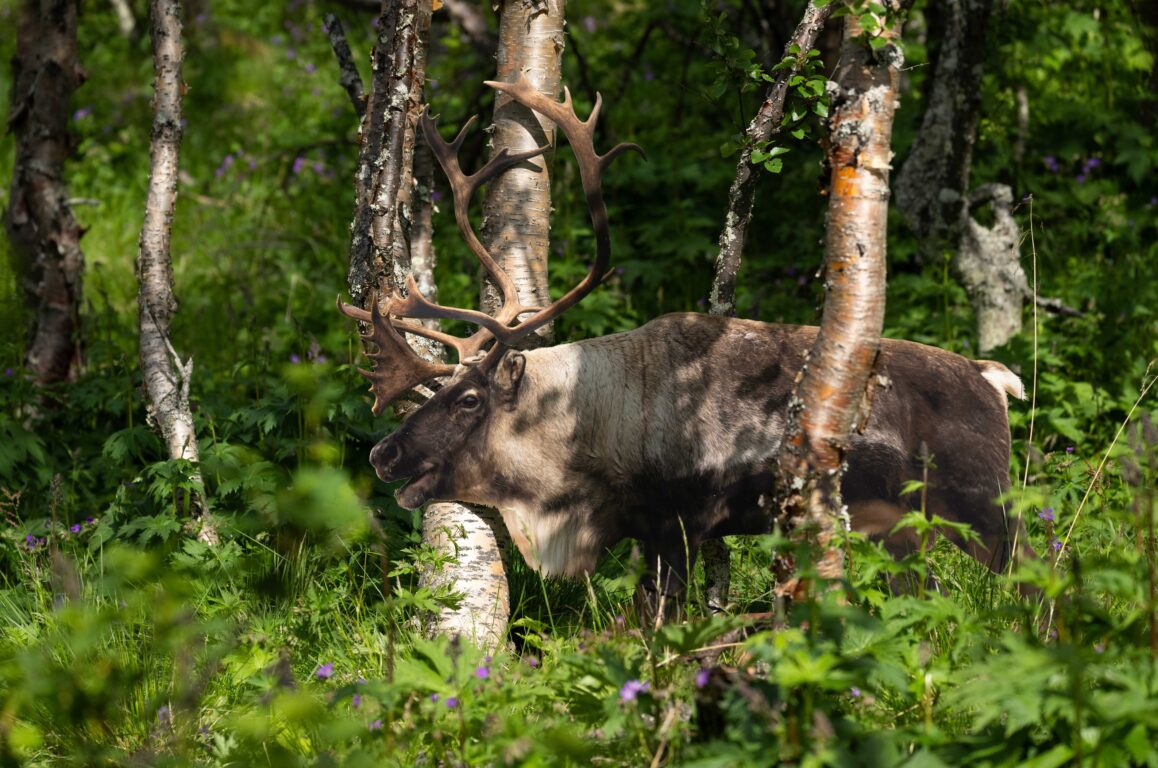Outdoor exhibition
The wildlife in Drivdalen is rich and varied, characterized by both forest, river and mountain landscape. The valley is a habitat for large mammals such as elk, deer and roe deer, which migrate down from the mountains and find food in the lush areas along the Driva River. Wild reindeer can also be found in the mountains surrounding the valley. Predators such as red foxes and arctic foxes are also found here, while wolverines roam the area from time to time. The area is also known for its botanical diversity, and this rich plant life provides the basis for a species-rich insect and bird life.
The animals you will find in this special outdoor exhibition are photographed by Roger Brendhagen

The musk ox
The musk ox, Ovibos moschatus, is a fascinating animal that is today a characteristic feature of the mountain areas around Drivdalen, especially on Dovrefjell. The musk ox was actually reintroduced to Dovrefjell from Greenland in the period 1932–1953, after the species had become extinct in Europe during the Ice Age. The first animals were released at Hjerkinn, and the population has since established itself in the area. The musk ox thrives best in the high mountain areas, but can sometimes move down towards Drivdalen, especially in spring when it searches for pasture. It is characterized by its massive body, long, coarse fur and characteristic curved horns.

Moose
The moose, Alces alces, is a common sight in Drivdalen and the surrounding areas. This large deer thrives in the valley's mosaic of forests, riverbanks and marshlands, where it finds plenty of food. The moose mainly eats twigs, leaves and herbs, and is particularly fond of willows and birch. The moose is most active at dusk and dawn, and can often be seen grazing along the riverbanks in Drivdalen. In winter, the moose often migrates to lower terrain to find food under the snow.

Reindeer
The wild reindeer, Rangifer tarandus, has a long history in the mountain areas around Drivdalen, especially on Dovrefjell. Wild reindeer have lived here for thousands of years, ever since the last ice age. Wild reindeer have adapted to the harsh mountain climate with their special adaptations, such as thick fur, wide hooves adapted to snow and the ability to find food under the snow.
In Drivdalen itself, it is not common to see reindeer in the middle of the valley floor. The large herds usually stay in the mountain areas, where they have good grazing areas.

Red fox
The red fox, Vulpes vulpes, is one of the most adaptable predators in Norway, and it is common in and around Drivdalen. It is found in both forest areas, mountains and more open cultural landscapes. The red fox has a characteristic red-orange fur, white tail tip and dark legs. It is known for being cunning and very good at adapting to different environments.
In Drivdalen and the surrounding areas, the fox plays an important role as a predator in the ecosystem, where it helps to regulate small rodent populations and at the same time is itself prey for larger predators such as lynx and golden eagles.

Arctic fox
The Arctic fox, Vulpes lagopus, is a small and rare fox in Norway that lives in high mountain areas such as Dovrefjell, which is located close to Drivdalen. The species is specially adapted to a cold climate and is easily recognized by its thick, white winter fur – and in the summer the fur is gray-brown. They have small ears and short legs that give them good thermal insulation.
In Drivdalen itself, the Arctic fox is rarely seen, as it primarily stays in the high mountains. Nevertheless, the areas around Drivdalen are important habitats for the Arctic fox.

Lily grouse
The ptarmigan, Lagopus lagopus, is a characteristic gallinaceous bird in the Norwegian mountain regions, including Drivdalen. It is well adapted to the high mountain landscape and is an important part of the mountain ecosystem. In summer, the ptarmigan is brown and white patterned, which provides good camouflage against heather and scrub, while in winter it changes to a completely white plumage that provides excellent concealment against snow.
The ptarmigan feeds mainly on buds, leaves and berries, and it often feeds on dwarf birch and willow. It is an important prey for birds of prey and predatory mammals.
